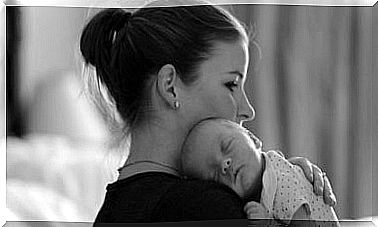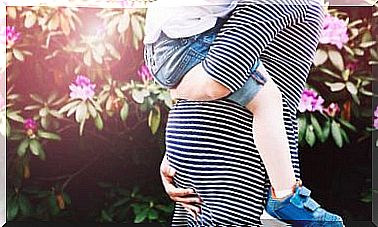Recommendations For Treating Hemorrhoids During Pregnancy – I’m A Mom

Hemorrhoids during pregnancy are more common than we think. But around this problem there is still some taboo. Therefore, we are often unaware of its presence and, therefore, also its treatment.
The common cold, inflammation of the leg veins, and the timing of childbirth are also potential triggers for inflammation of the intestinal tissue. Consequently, this period is favorable for the appearance of hemorrhoids. Which is why 40% of women can be affected by this problem during pregnancy.
The complication of hemorrhoids usually occurs when it comes to their externalization, which results in prolapse and uncomfortable pain. Discomfort from external hemorrhoids is more common when a woman sits down to clean herself or just move around. In this case, hemorrhoids that become thrombi can be very painful.
In the case of internal ones, they can become almost imperceptible. Sometimes they cause a little pain and their only complication may be slight bleeding in the stool. While this bleeding may be of concern to a pregnant woman, in this case it poses no risk to the fetus.
Main symptoms of hemorrhoids

It is simple to identify the signs that indicate the appearance of hemorrhoids. As we already know, they are very common during pregnancy and can appear at any stage of pregnancy. But they are more recurrent during the third trimester. During the final period of pregnancy, there is more pressure on the anus, which is one of the main causes of its occurrence.
Symptoms that evidence the presence of hemorrhoids may be as follows.
- Pain in the area, especially during bowel movements.
- Burning
- Itch
- Discomfort when walking, sitting or changing position while sleeping
- occasional bleeding
As we said, this problem usually presents itself frequently during pregnancy. Although it can be prevented through a diet rich in fiber and adequate hydration, we cannot completely prevent the disease. However, there are measures that can be put in place to treat it and seek the relief we desire.
How to treat hemorrhoids in pregnancy?
Recommendations made by experts and experienced mothers are as follows.
- Generally, some medications are indicated. But in the case of pregnancy, it is preferable to avoid most medication. Sometimes the complication of hemorrhoids leads to surgical intervention, which should be avoided as much as possible during this phase.
- Creams or suppositories may be indicated, as long as they are harmless to the fetus.
- Natural remedies involve treatment with warm water. For some women, the application of ice packs and, for others, hot water has also worked .

- To relieve friction, the use of cotton underwear is recommended. Also, cleaning with damp towels is preferable to toilet paper.
- It is very important to maintain proper hygiene, especially after bowel movements. For any remaining stool could cause itchiness. It is advisable to wash with mild soap and water after using the bathroom. Afterwards, it must be dried well to avoid dampness in the area.
- Avoid spending too much time sitting or standing. Also, prefer to sleep on your side rather than on your back.
- To improve the situation, it is also advisable to change our eating habits. In this way, we soften the stool in order to avoid further pain.
- Exercise also helps to improve circulation. But we should avoid cycling because the seating position can be harmful.
- Maintain a regular meal schedule and avoid the possible consumption of foods that can cause flatulence or are astringent.
- Remember to see a doctor if there is a lot of pain. Especially during the postpartum period due to episiotomy or caesarean section.









